Human Factors Lab
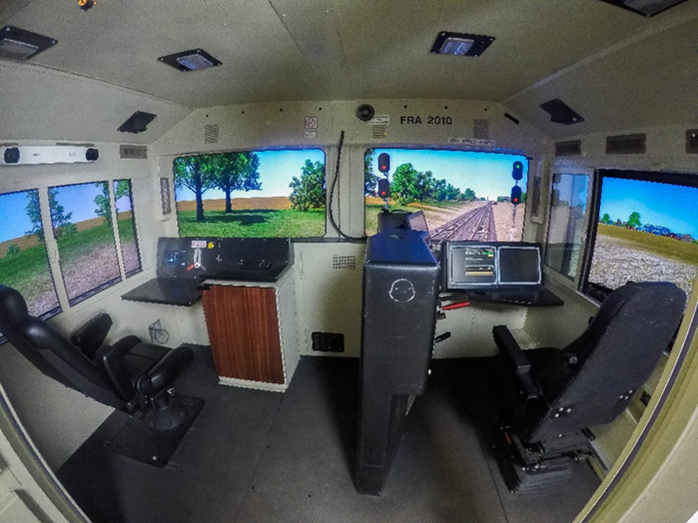
Demonstrating Safety across Modes
The U.S. DOT Volpe Center’s Transportation Human Factors team provides internationally recognized human factors research, engineering, development, and evaluation capabilities within a human systems integration framework. The U.S. DOT Volpe Center pioneers new research focused on the relationships between humans and policies, processes, automation, and technologies to improve transportation safety, security, and productivity with due concern for unintended consequences.
Work underway at the U.S. DOT Volpe Center’s Human Factors Laboratory is focused on improving transportation safety by developing and applying innovative human factors processes and principles to our sponsors’ programs and initiatives.
Inside Our Human Factors Lab
The Human Factors Lab can be flexibly configured to solve transportation's pressing challenges. Research in the Human Factors Lab seeks to understand how humans interact with systems, as well as how to understand risks, predict errors, and develop mitigations to improve transportation safety. For example, lab research allows one to test new systems, procedures, or technologies in a controlled, configurable, environment, before they are operational.
Inside the lab, researchers focus on rigorous and transparent scientific work on how these tools support transportation innovation for the public good. Human Factors experts can use the lab to safely test out new displays/infrastructure that would be costly to implement.
Experts at the U.S. DOT Volpe Center have a deep, multi-disciplinary expertise across modes, with more than 50 years of successful service to U.S. DOT and beyond, enabling partnering as federal equals on inherently governmental and cutting-edge work.
Studying Behavior at Railroad Grade Crossings
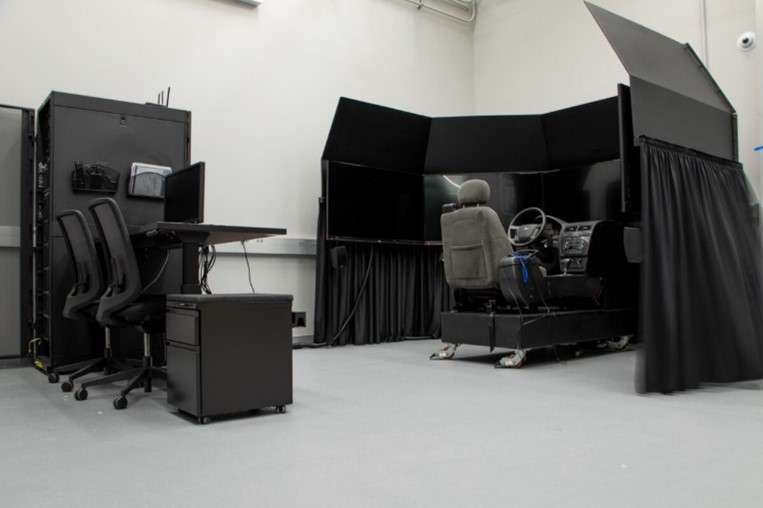
Crashes at highway-railroad grade crossings remain one of the leading causes of accidents, injury, and death within the U.S. railroad system. Research conducted in FRA’s Behavior and Railroad Crossings Laboratory (B-RX) helps support increased safety by learning more about driver behavior at grade crossings. This knowledge can be used to maximize the safety interventions related to education, engineering, and enforcement.
Researching the Design and Impacts of Locomotive Cab Technologies
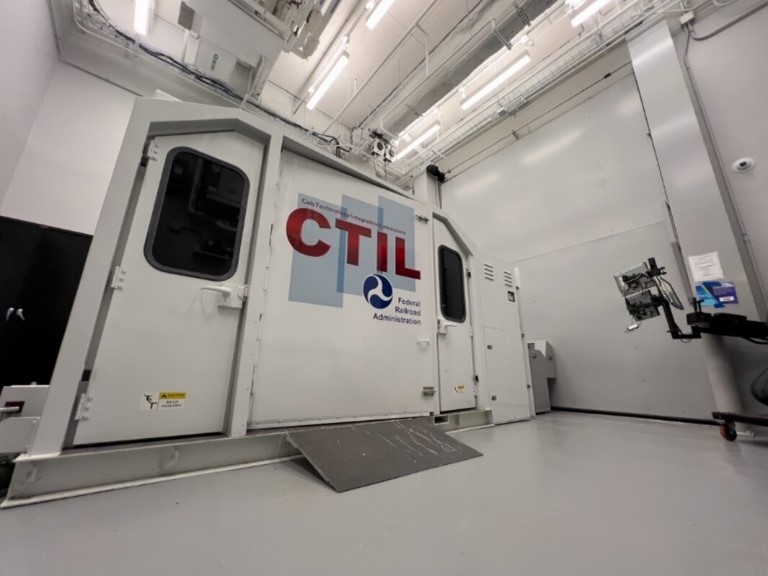
FRA’s Cab Technology Integration Laboratory (CTIL) is a high-fidelity, full-sized locomotive simulator configured with tools for studying the boundaries of operator capability and performance, as well as the impact of new technologies. Research conducted in this lab includes informing the design of future technologies through researching human factors considerations such as display interface design and workstation ergonomics.
Evaluating Alcohol Test and Detection Devices

Started in 1970, the U.S. DOT Volpe Center’s Alcohol Countermeasures Laboratory is the primary NHTSA-recognized laboratory with the authority to test and approve alcohol-detection devices that are used by law enforcement and the transportation industry, evaluated according to NHTSA’s Model Specifications for evidential breath testers, alcohol screening devices, and calibrating units. The U.S. DOT Volpe Center team also uses this lab to evaluate other alcohol test devices of interest because of potential usefulness in alcohol countermeasures, such as ignition interlock devices, disposable or reusable personal breath testers, passive breath testers, or devices that test other fluids for alcohol (e.g., saliva testers).
Researching Solutions in the Virtual Reality/Augmented Reality Lab
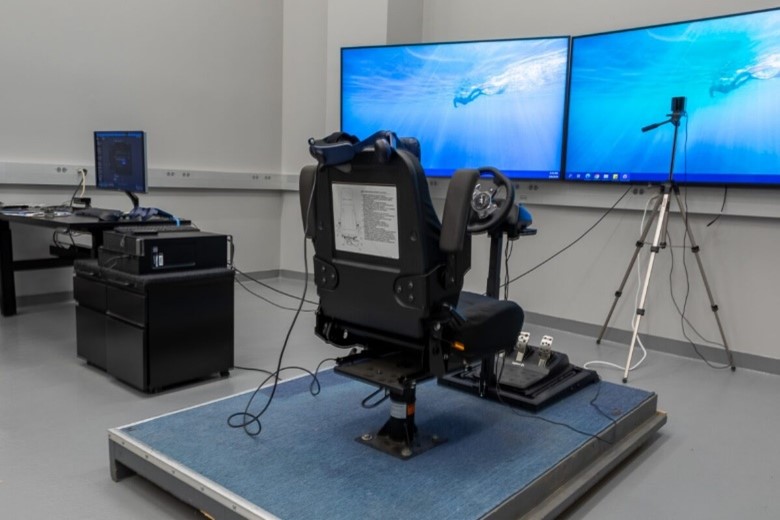
In the U.S. DOT Volpe Center’s Virtual Reality (VR) Lab, scientists use VR headsets to answer a variety of transportation safety research questions in topic areas such as unintended consequences of automation, interactions of vehicles, operators, and infrastructure, and driver training. For example, by creating a virtual world and asking human subjects to complete a driving scenario displayed in VR headsets, researchers can assess options for mitigating blind zones in heavy trucks to protect bicyclists and pedestrians.
Collaborating and Innovating in the Maker Space

As this space is built out, U.S. DOT Volpe Center employees and sponsors can use our Maker Space—a workshop equipped with hand-tools, 3-D printers, and clean, brightly lit fabrication space—to invent, prototype, and rapidly re-design equipment to help sponsors envision safety technologies of tomorrow. This purposeful, creative space will bring together innovators across disciplines. The ability to translate ideation to physical products will accelerate learning, resulting in advancing innovation for the public good.
Evaluating How Pilots Interact with New Technology
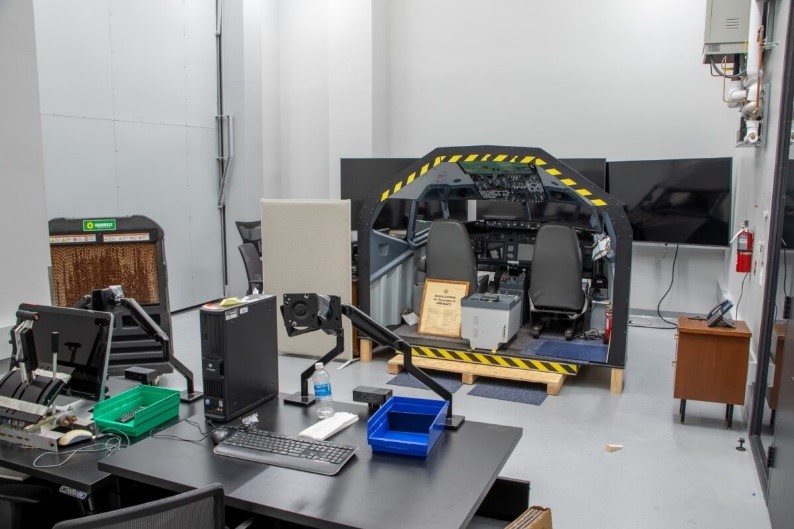
The U.S. DOT Volpe Center’s 737 NextGen Configured Flight Deck Simulator sheds light on how pilots interact with new technology and provides a platform for “human-in-the-loop” experiments, allowing in-situ investigations into new technologies, automated systems, and procedures. The simulator supports two-crew simulations by adding functional automation to replicate crew workload, airport surface procedures, and all flight phases.
Features of the 737 NextGen Configured Flight Deck Simulator include:
- Dimensionally accurate panel and flight deck
- Functional Mode Control Panel and dual Flight Management System
- Motorized auto-throttle feedback
- Customizable Control Display Unit pages and display graphics
- Configurable data recording capability to match research needs
